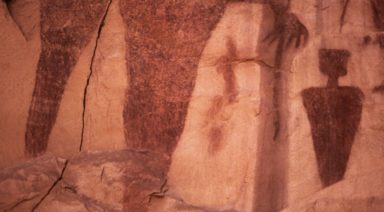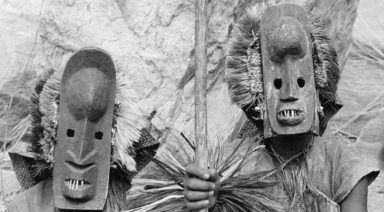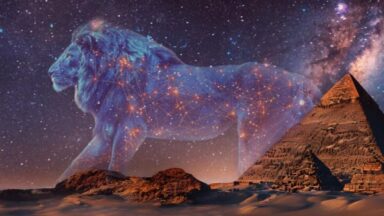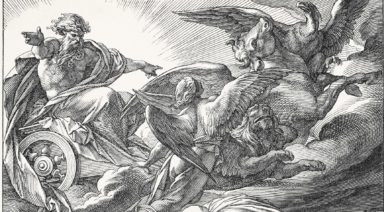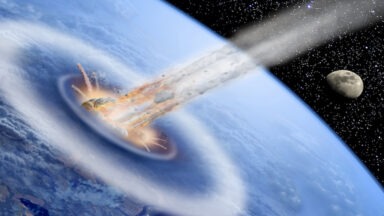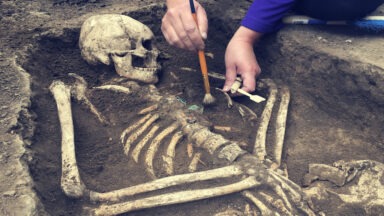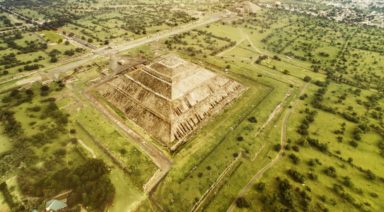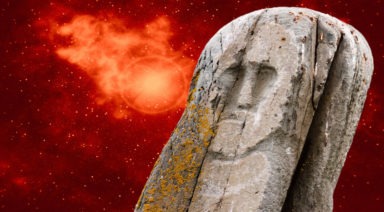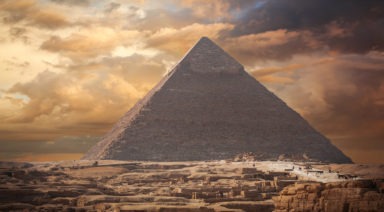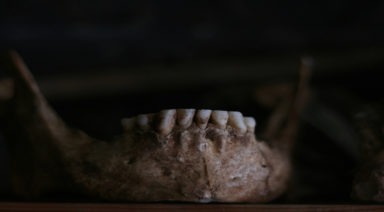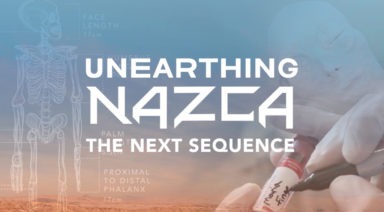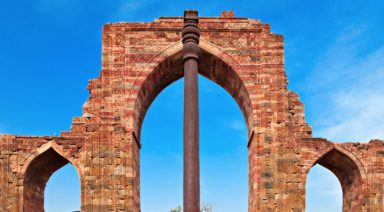Viracocha: The Great Creator God of the Incas
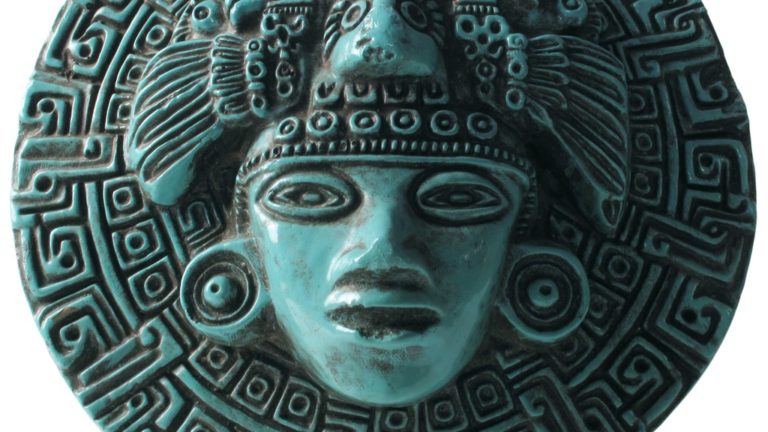
Considered the supreme creator god of the Incas, Viracocha (also known as Huiracocha, Wiraqocha, and Wiro Qocha), was revered as the patriarch god in pre-Inca Peru and Incan pantheism. His name was so sacred that it was rarely spoken aloud; instead replaced with others, including Ilya (light), Ticci (beginning) and Wiraqocha Pacayacaciq (instructor).
This reverence is similar to other religious traditions, including Judaism, in which God’s name is rarely uttered, and instead replaced with words such as Adonai, Hashem, or Yahweh. Viracocha is part of the rich multicultural and multireligious lineage and cosmology of creation myth gods, from Allah to Pangu, to Shiva. A brief sampling of creation myth texts reveal a similarity:
“In the beginning, God created the heavens and the Earth. Now the Earth was formless and empty, darkness was over the surface of the deep, and the Spirit of God was hovering over the waters.” (Genesis 1:1)
“When heaven and Earth began, three deities came into being, The Spirit Master of the Center of Heaven, The August Wondrously Producing Spirit, and the Divine Wondrously Producing Ancestor. These three were invisible. The Earth was young then, and land floated like oil, and from it, reed shoots sprouted.” (Kojiki, the Japanese “Record of Ancient Things”)
“In the beginning, there was Chaos, the abyss. Out of it first emerged Gaia, the Earth, which is the foundation of all. Next came Tartaros, the depth in the Earth where condemned dead souls to go to their punishment, and Eros, the love that overwhelms bodies and minds, and Erebos, the darkness, and Nyx, the night. Erebos and Nyx made love and from their union came Aether, the air, and Hemera, the day.” (“Gaia,” Theogony)
These texts, as well as most creation myths (regardless of origin), are centered on the common idea of a powerful deity or deities creating what we understand to be life and all its many aspects. Legendary Viracocha, the God of Creation of ancient South American cultures, and a symbol of human’s capacity to create destroy, and rebuild, and is firmly rooted in creation mythology themes.
THE LEGEND OF VIRACOCHA
Legend tells us that a primordial Viracocha emerged out Lake Titicaca, one of the most beautiful and spiritually bodies of water in the world and located next to Tiwanaku, the epicenter of ancient pre-Hispanic South American culture, believed location of spiritual secrets found in the Andes. Viracocha is intimately connected with the ocean and all water and with the creation of two races of people; a race of giants who were eventually destroyed by their creator, with some being turned into enormous stones believed to still be present at Tiwanaku.
He re-emerged from Lake Titicaca to create the race most associated with humans as we understand them today. Satisfied with his efforts, Viracocha embarked on an odyssey to spread his form of gospel — civilization, from the arts to agriculture, to language, the aspects of humanity that are shared across cultures and beliefs.
While written language was not part of the Incan culture, the rich oral and non-linguistic modes of record-keeping sustained the mythology surrounding Viracocha as the supreme creator of all things. Now much-visited ruins, the distinct structures, and monoliths, including the architecturally stunning Gateway of the Sun, are testimony to the powerful civilization that reached its peak between 500-900 AD, and which deeply influenced the Incan culture.
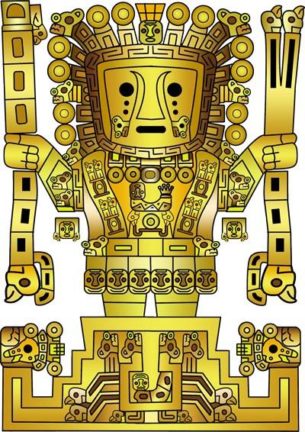
THE INCAS AND CIVILIZATION
The Incas were a powerful culture in South America from 1500-1550, known a the Spanish “Age of Conquest.” Rich in culture and complex in its systems, the Inca empire expanded from what is now known as modern-day Colombia to Chile.
The significance of the Viracocha creation mythology to the Inca civilization says much about the culture, which despite being engaged in conquering, was surprisingly inclusive. A rival tribe’s beliefs, upon a victorious conquest, were adopted by the Incas. As well, enemies were allowed to retain their religious traditions, in stark contrast to the period of Spanish domination, requiring conversion on pain of death.
The Incas, as deeply spiritual people, professed a religion built upon an interconnected group of deities, with Viracocha as the most revered and powerful. Stars and constellations were worshipped as celestial animals; and places and objects, or huacas, were viewed as inhabited by divinity, becoming sacred sites.
THE SIGNIFICANCE OF VIRACOCHA TODAY
Viracocha’s story begins and ends with water. He emerged from Lake Titicaca, then walked across the Pacific Ocean, vowing one day to return. The messianic promise of return, as well as a connection to tidal waters, reverberates in today’s culture. For many, Viracocha’s creation myth continues to resonate, from his loving investment in humanity, to his the promise to return, representing hope, compassion, and ultimately, the goodness and capacity of our species.
Did The Druids Share a Common Ancestry With Other Ancient Civilizations?

There are few groups in history more enigmatic than those known as the druids. Today there are two neo-druidic sects, whose philosophy centers around a reverence for nature, diversity, and love. These are the often-cloaked people known to perform ceremonies in nature and at megalithic sites such as Stonehenge.
The Druids of antiquity are steeped in legend and folklore, having no written record of who they truly were or where they originally came from. The general consensus holds that they were a highly revered group, with a divine connection to nature and authoritative wisdom that trumped even the highest nobility. They are widely known to be of Celtic origin, but some alternative theories see them as having a common ancestry with ancient Eastern cultures or even one possibly originating in Atlantis.
Ancient Druids
In ancient times, Druids were known as wise elders who would congregate around oak trees. In fact, the word Druid or Druwid in Celtic translates to oak-knower or “knowing the oak tree,” though little is known what exactly this erudite group was really like. The recorded history of the ancient Druids typically falls into two categories; those that are based on ancient Roman writings, and those based on interpretations of writings seen as distorted Roman propaganda.
The Celtic Druids inhabited the area of Europe once known as Gaul, where they were eventually conquered by the Romans. One of the best-written accounts of the ancient Druids comes from Julius Caesar who described them as civilized, wise, and noble people, with the exception of their alleged ritual human sacrifice. Caesar and Tacitus led the conquering of Gaul and the subsequent persecution of the Druids, viewing them as overly superstitious and having dictatorial control over society.
The Druid religion was said to have sacrificed criminals in a massive wooden effigy, known as a wicker man, which was filled with people and set on fire. Caesar claimed that the Gauls were so consumed by the superstitions of Druidic rituals that they were quick to sacrifice, and would even offer up innocent people if they lacked sufficient criminals. Many contest this image of the Druids as inaccurate and an attempt by Caesar to depict them as a society worth integrating into Roman culture, albeit one that needed civilizing.






